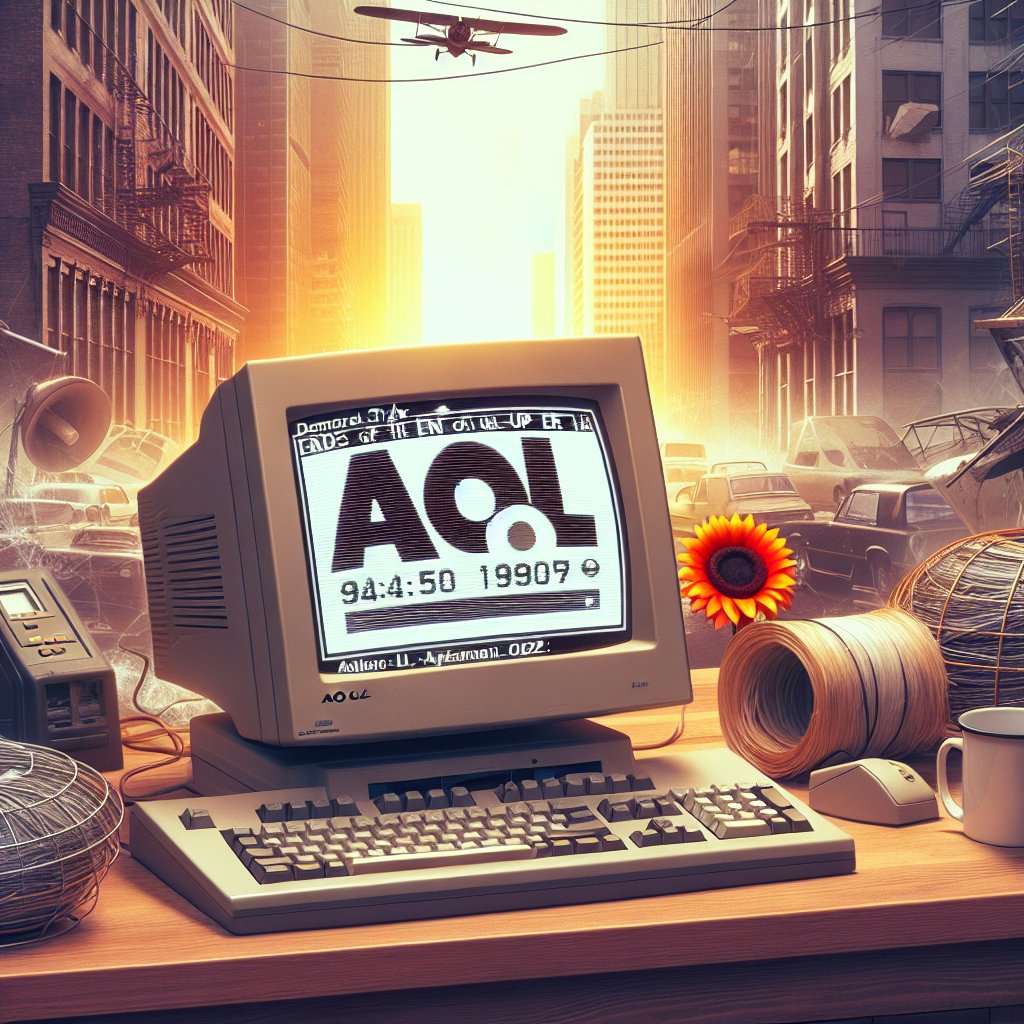The Final Curtain Call for Dial-Up
AOL’s dial-up internet service has officially been retired, marking the end of an era that many of us remember all too well. The company announced it would pull the plug on September 30, citing a need to streamline its offerings. This move leaves a nostalgic void for those who recall the symphony of beeps and buzzes that heralded a successful connection—or the frustration of being booted offline when someone picked up the landline. AOL, once a titan of online connectivity in the 90s and early 2000s, has finally let go of its dial-up service, a relic of the past that introduced millions to the wonders of the World Wide Web.
AOL’s Legacy and the Rise of Broadband
Remember when getting online meant tying up the phone line? AOL’s dial-up service was synonymous with the early internet experience, complete with CDs offering free trials that cluttered mailboxes across America. However, as broadband and wireless internet services emerged, they gradually nudged dial-up into obscurity. Despite this, a surprising number of households—163,401 according to recent Census Bureau data—were still using dial-up in 2023. While this represents a minuscule 0.13% of internet subscriptions, it underscores the persistence of dial-up’s legacy, even as technology has marched forward.
AOL’s decision to discontinue dial-up is part of a broader trend where older technologies are phased out. Microsoft recently retired Skype and Internet Explorer, while AOL itself axed its Instant Messenger in 2017. These changes reflect a digital world that is ever-evolving, leaving behind the once-familiar icons of our online past. Yet, even as these services fade, their impact on the digital landscape remains indelible.
From Tech Giant to Historical Footnote
AOL’s journey from a pioneering tech giant to a historical footnote is a tale of the internet’s rapid evolution. Founded as Quantum Computer Services in 1985, AOL rebranded in the early 90s and became a household name. At the height of the dot-com boom, its market value soared to nearly $164 billion. However, the subsequent years were less kind. A disastrous merger with Time Warner and multiple ownership changes—including a stint under Verizon—saw AOL’s influence wane. Today, AOL operates under the Yahoo umbrella, a shadow of its former self, yet still offering email services and tech support subscriptions.
The decline in dial-up users was inevitable as technology advanced. When Verizon acquired AOL in 2015, there were still 2.1 million dial-up users. By the time Verizon sold AOL in 2021, that number had dwindled to mere thousands. Despite this, AOL’s legacy as a gateway to the internet’s early days endures, with its ‘You’ve got mail’ catchphrase immortalized in pop culture.
Looking Back with a Smile
As we bid farewell to AOL’s dial-up service, it’s worth reflecting on how far we’ve come. The internet today is a vastly different place, offering speeds and connectivity that dial-up could only dream of. Yet, there’s a certain charm in recalling those early days of tentative exploration, where each online session felt like a small adventure.
While AOL’s dial-up service may be gone, its impact on the digital age is undeniable. It introduced countless individuals to the online world, paving the way for the interconnected society we enjoy today. So here’s to AOL dial-up—may it rest in peace, forever a fond memory in the annals of internet history.



